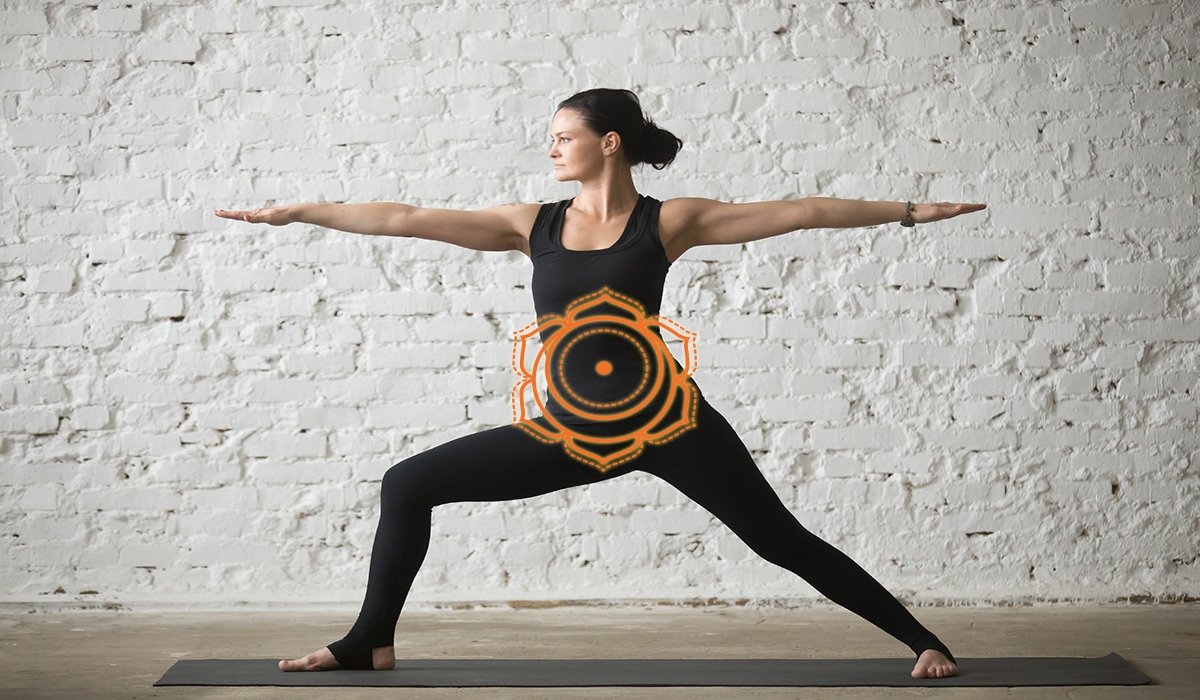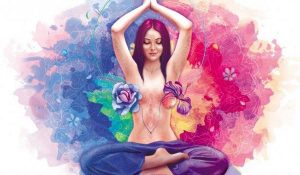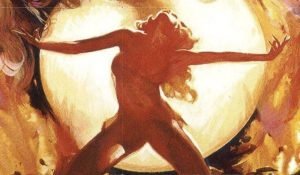When the second Svadisthana chakra, also called sacral chakra, is perfectly balanced and open, we are able to exploit its creative energy to the fullest and trigger positive changes in our lives.
When Svadisthana’s energy is in balance – not too intense or not too loose – feelings of abundance, joy of life and pleasure are triggered , and this way creative energy is flown into our life.
When the second chakra is open and balanced, we love life deeply and are able to derive physical and mental pleasure from all our experiences.
Why is the second chakra blocked?
Energetically, the second chakra governs creativity, emotions, joy, enthusiasm, and sensuality. Physically it is located in the lower area of the abdomen, below the navel, and is said to be the seat of the reproductive organs.
When the second chakra is blocked, for example by emotional trauma or chronic stress, we are unable to connect with our passions. We tend to want to control every aspect of our lives, we lack the enthusiasm and we may not be able to connect intimately or regain some self-love. Physically, the body can manifest these chained emotions through unexplained low back pain, dysfunction of the sexual organs and reproductive problems.
Unfortunately, our modern lives, mainly linked to the desk and the car, can exacerbate the imbalance of the second chakra. We sit more, and for longer periods than ever, with the consequent weakening of our hips that inhibit the creative energies of the second chakra.
To this end, one of the most accessible ways to undo these restrictions and find the balance of the second chakra is through the asanas. The physical positions of yoga allow prana (the vivifying breath) to flow, activate and direct energy appropriately, according to the yogic philosophy.
Exercises to unlock the second chakra
Virasana (with block)

For this exercise you will need a yoga block: kneel down and slide the block between the heels, pressing on its long sides with the ankles; place the back and the toenails evenly on the ground.
Now sit down and keep your back straight and stretch the top of your head upward. Make sure the block evenly supports both buttocks. Place your hands on your thighs or on your stomach as you lean backward, then inhale deeply through your stomach.
After a few breaths, start cultivating Ujjayi Pranayama (Victorious Breath) by dragging your breath along the back of your throat as you inhale and exhale through your nose. Continue for 2 or 3 minutes. Starting from this position, you have laid out a solid foundation for the rest of the exercises.
Hips rotation

From Virasana, bring your hands forward on the mat and hold your knees under your hips and your wrists under your shoulders.
Now it starts spinning your hips as if to form small imaginary circles, warming up your spine and inviting your whole body to experience a sense of fluidity. As your body becomes warmer, you can expand the circumference of the circles more and more, until you are completely left in Balasana (Child Pose) for some breaths.
Spend at least a minute moving your hips in every direction. When you’re done, get up in Adho Mukha Svanasana (Down Dog) and hold the pose for at least 30 seconds.
Anjaneyasana (Low Lunge)

Starting from the Down Dog pose, take your right foot towards the tip of your right hand’s thumb and simultaneously place your left knee on the mat.
Press the top of your left foot firmly onto the mat while extending your left leg and place your right foot in front of you. Make sure the front knee is not positioned past the ankle but is perfectly parallel to it.
Now remove the arms from the ground and extend them upwards. Intertwine all fingers except the forefinger, which will pull upward, and bring your arms back away from your ears as far as you can. Look upwards as you lift slightly off the ground and breathe deeply. Make sure to draw an arch formed by your left leg, back, and arms. Keep this position for 1 minute.
Ardha Hanumanasana

Starting from the previous position, place your hands on the ground on both sides of your right foot and push backward, straightening and stretching your right leg while you bend your right foot upward, with the tips of your fingers up.
Stretch your torso forward as you inhale and bend it slightly backward as you exhale; if you feel the lower part of your back bending too much during this action, place two blocks under the palms of your hands or place only the tips of your fingers on the floor.
Let the breath say the movements of the upper part of your body, continuing to bring it forward and backward for 10-12 breaths. Then he expires one last time and returns to the Down Dog position, passing first to Anjaneyasana.
Utkata Konasana (position of the Goddess)

Starting from the Down Dog, put yourself in a standing position, spacing out your feet as much as possible (their distance should be more or less corresponding to the length of your leg); turn your legs and feet slightly about 45 degrees, so that your fingers point outwards.
Bend your knees deep to create a 90-degree angle with your knees, so that they line up perfectly with your feet. Push your hips and coccyx down as much as you can, keeping your balance. Line up the torso and pelvis with the rest of the body and stretch the top of the head upward. Join the palms of your hands in front of your chest in Anjali Mudra.
Try to keep this position for 1 minute; while you breathe, move your body slightly from side to side, or back and forth, checking the balance through the heels and toes.
Virabhadrasana II (Warrior II)

Starting from Urkata Konasana, turn your hips to the right and firmly plant the sole of your right foot on the mat, parallel to the edge of your mat.
At the same time, extend the left leg by resting the left foot in a position perpendicular to the right one. Extend your right arm in front of you and the left arm behind you, parallel to the ground and perpendicular to your body. Direct the look on your middle right finger.
Bend the right knee so that it is aligned with the right ankle, in the direction of the toes. Inhale and exhale for 6-8 complete cycles. As you lean forward in this posture, you remain receptive to all that is happening inside of you.
Let feelings, thoughts, and emotions cross you easily simply by reminding yourself that every experience is impermanent.
Viparita Virabhadrasana (Reverse Warrior)

Keep your legs in Warrior II, but bring the right-hand palm up and start stretching your torso backward, reversing your warrior as you slide your left hand down the back leg.
Do what you can to keep a 90-degree angle with your right leg, making sure that your thigh is parallel to the mat. At the same time, it creates a softer shape with the upper body. Let go of the idea that this should be a “perfect” posture and concentrate instead on the stimuli you receive from your muscles, making any changes that your body deems necessary.
Keep the asana for 6-8 breaths. Return now to the position of the Goddess, then repeat Warrior II and Reverse Warrior on the left side. Finish in Goddess.
Prasarita Padottanasana C

From the position of the Goddess, straighten the legs and rotate the toes of the feet forward; intertwine your fingers behind your back. Push hard on the heels and lift the kneecaps, tightening the thighs as you slowly bend the torso forward and (if you can) bring the top of the head to the floor.
Move the weight forward slightly, aligning the hips above the heels. As you open your hips, think about lifting the pelvic floor, seeking balance in your second chakra. Keep the asana breathing for 1 minute.
When you’re done, pivot on your feet, enter Low Lunge with your right foot forward and then step back towards the Down Dog.
“A yoga practice focused on the hips can free the discomfort and help you consider everything as an opportunity,” says Mary Beth LaRue, a yoga teacher based in Los Angeles. “Ultimately, the asanas that open the hips teach you to loosen the grip on life and let things flow in the right way. And finding a sense of fluidity in your daily life transforms all your relationships, including that with yourself. “
Recommended Book for You:
Learn chakra balancing techniques so you’ll be able to heal your chakras into perfect alignment and attract wealth and abundance into your life.









